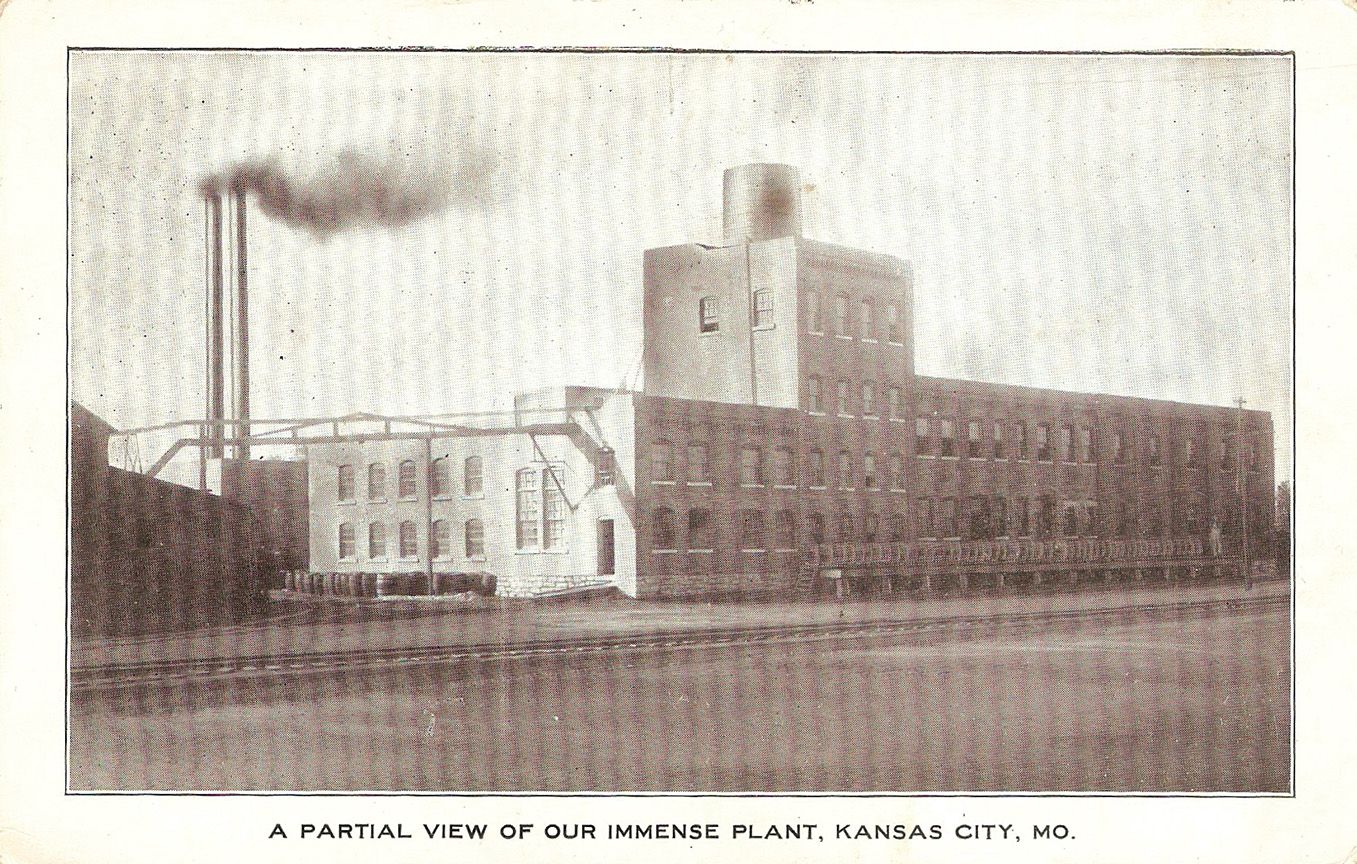
Michael Bushnell
Northeast News
This week’s historic postcard shows the Monarch Vinegar Works “immense plant” in Kansas City, Missouri.
The plant shown is located at 2400 Nicholson and still manufactures white vinegar and cider vinegar.
The cylindrical object at the top of the building is the old still, over what was the still room/barrel room.
The smokestacks visible on the left extended from the old boiler room and have long since been shortened from their original height.
A newer addition now stands to the immediate left of the main building shown on the postcard.
John Wesley Speas could be considered one of Kansas City’s greatest Horatio Alger stories.
Speas started at Monarch in the early 1880s and moved up steadily through the ranks.
In 1888, he purchased Monarch, along with business partners E. L. Martin and Patrick Walsh, and shortly thereafter changed the name to Speas Manufacturing Company.
In 1909, the elder Speas died and his son Victor took over the operation until his death in 1970.
Under Victor Speas’ leadership, the company grew from a single location in the East Bottoms to over twenty plants in fourteen states.
Although enigmatic, Victor Speas was considered by many to be a man of mystery.
He often worked seven days a week and only left town to visit his factories in other states.
Speas lived with his mother in the family home at 3728 Holmes, until her death in 1956.
Interestingly, he also dated the same woman for over 30 years, wedding her when he was 64.
The family home was gifted to Grace and Holy Trinity Cathedral upon his death.
Since that time, the company has undergone a number of mergers and buyouts. It operates today under the banner of Mizkan Americas.
The sales message on the reverse of the postcard reads: “Our jovial representative will call on you soon with AN AWFUL SOUR TALE. Please wait for him to show you how to make money – not a counter fitter but guaranteed under the pure food law.”
The view on this postcard was current until only weeks ago when demolition was completed on most of what is seen in this card. The only original portion of the structure that remains is to the far right where the window pattern differs from the rest of the building.



















